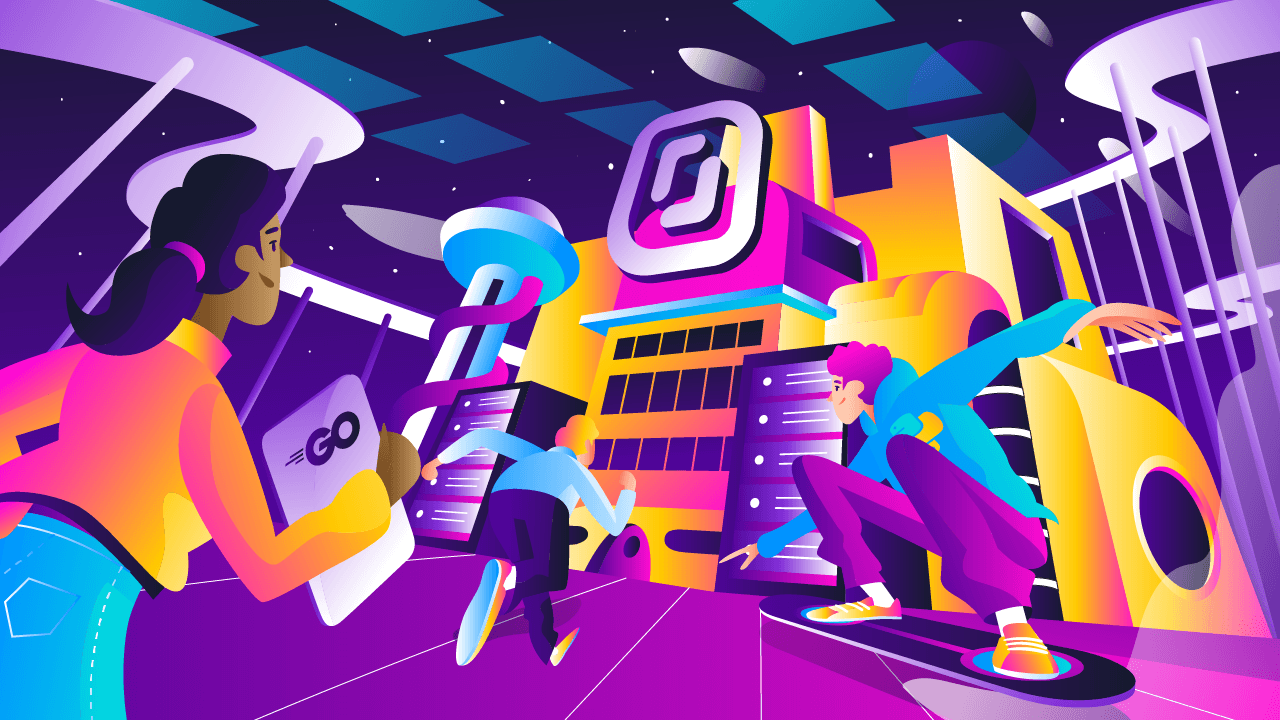GreenoSoil is a Moldovan startup which uses satellite imagery and AI analysis to encourage farmers to move towards more sustainable agricultural practices, and then connects them with the global food market, via its GreenO platform. It recently migrated part of its infrastructure from AWS to Scaleway. CEO Vitalie Buzu & CTO Andrei Sukhonosov explain why in this interview!
What is GreenoSoil?
Vitalie Buzu: Founded late last year, GreenoSoil is the company behind GreenO, a data platform for promoting regenerative agriculture, by connecting farmers with food value chain participants, like agro-chemical holdings, seed producers, banks and many more. The objective is to increase agricultural efficiency, but also to drive decarbonization. Currently present in Europe, Latin America (Brazil and Argentina) and the US and Canada, we ultimately want a billion hectares of land covered in our database.
How does GreenO work?
VB: We use satellite data and remote sensing, and analyze those streams through our own AI models to come up with practically applicable solutions. For example, we can see which land is arable or not; know what crops are growing where and with which practices (e.g. plowing or not); identify and manage deforestation; analyze soil degradation, and so on.
We can above all see which farmers are using regenerative practices or not, and encourage them to do more. For example, by showing them which fields can sequester more carbon, so they put more effort into farming that land; or by identifying if regenerative grazing is applicable, so that soil health isn’t depleted.
This is all super useful information, because companies like Nestlé want to favor regenerative farming by offering farmers a premium on more sustainable products, and also by promoting certain regenerative products to them. Some food companies are already paying around 10% more for regenerative food. It’s not at scale yet, globally speaking, but it will be in a couple of years.
Why did you decide to move to Scaleway?
VB: Cloud costs are a big obstacle for many startups. If your cloud costs too much to run, it can kill the business. We’ve been through that too. We were with AWS, but it was getting too expensive and inflexible. If you’re not a big customer, you have to run after them to get a solution. So we worked on improving how we process data, to ensure we process as little as possible; and we moved to Scaleway. We used to pay them eight times more than we pay Scaleway! That’s a difference that allows us to hire five more people, and to scale in many more countries than before. Scaleway’s customer support is really friendly, we can always give feedback and suggest customizations. Not to mention sustainability, especially as we rely a lot on AI: we can’t use resources that destroy the planet whilst trying to save it!
What resources did GreenoSoil transfer from AWS to Scaleway?
Andrei Sukhonosov: We transferred our processing pipelines, which extract data from satellite imagery using machine learning (ML) models. Our user-faced services still run on AWS, where we’re committed until early 2024. They run on ARM and we’d like to keep it that way, so we need to wait until ARM is production-ready on Scaleway.
How did the migration process go? What Scaleway products are you using now?
VB: Our infrastructure was designed in a way that fits with AWS’ logic: how to scale it, how the code is written and so on. When we moved to Scaleway, last March, we had some adjustments to make. But it just took one month to fully transfer, it was mainly painless.
AS: We started with just 20 of Scaleway’s (experimental) ARM Instances, as well as databases, Object Storage and a bit of Kapsule, your Kubernetes product. We’re now also using some of your GPU-3070 Instances, which we plan to migrate to H100.
Scaleway fits our needs perfectly, especially as we started off with your Startup Programs Voucher, which helps a lot.
What’s next for GreenoSoil and Scaleway?
VB: We’re going to be using a lot more AI, so moving from 2-3 models to 5-7, with a lot more data going into them than before. We’re adding new satellites to our array, which introduces new data streams, so we’ll need to add more data layers to our models. Furthermore, the market demands that processing speed increase constantly. Before, we had to run the models once a year; now it’s moving towards monthly, and could be daily, or even in real time, one day. So controlling costs despite all of this growth will be absolutely key moving forwards.
AS: So we’ll need more ARM Instances, and then to migrate to your new NVIDIA H100 PCIe Tensor Core GPUs, since our machine learning models are getting bigger and bigger. We’re looking forward to getting started with those!

